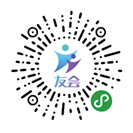新报告发现职业父母的倦怠与心理健康问题和对儿童的惩罚行为相关
Full text
Ohio State report finds alarming trends, offers strategies and resources to help
A new report released today by The Ohio State University Office of the Chief Wellness Officer and College of Nursing reveals the level of burnout among working parents during the COVID-19 pandemic and the adverse consequences of that burnout for both themselves and their children.
The report is based on a survey to measure not only the impact of burnout on working parents, but also on their children. The survey was conducted between January – April 2021 – in the thick of the pandemic when vaccines were still not available for children – and discovered insights on how much COVID-19 exacerbated working parental burnout.
“’Parental burnout.’ When I heard that, I thought, ‘That’s it. That’s what I’m feeling,’” said Kate Gawlik, DNP, APRN-CNP, FAANP, FNAP, associate professor of clinical nursing at The Ohio State University College of Nursing, co-author of the report and mother of four children ages 10 and under. “It’s just this overwhelming sense of having to be on 24/7 in so many different roles and just having to be invested in those roles so intensely.
“You want to try to be such a great parent; you want to do well at your job; you want to be a good partner; you want to have a clean house,” Gawlik continued. “There’s just so much being thrown at you with having to do all of that in a pandemic, it’s almost like burnout, to some degree, is inevitable.”
Working parents with children under the age of 18 living with them self-selected to participate in the survey. Among the key findings:
Sixty-six percent (66%) of working parents responding met the criteria for burnout. Being female, the number of children living in the home, anxiety in the parent, having children with either diagnosed anxiety or ADHD and parental concern that their children may have an undiagnosed mental health disorder show the strongest associations with working parental burnout.
Burnout is associated with depression, anxiety and increased alcohol consumption in working parents, as well as the likelihood for parents to be irritable, get easily angered with their children and engage in punitive parenting practices (i.e. yelling, insulting/criticizing, cursing, spanking).
According to parents’ self-reporting, the presence of working parent burnout has a strong association with attention, internalizing and externalizing behaviors in their children. Examples of these kinds of behaviors include:
Attention behaviors: inability to sit still, trouble concentrating, easily distracted
Internalizing: feels sad or unhappy, down on themselves, worries a lot
Externalizing: fights with other children, does not listen to rules, teases others
“We’re not going to just magically come out of the COVID-19 pandemic,” said Bernadette Melnyk, PhD, APRN-CNP, FAANP, FNAP, FAAN, Ohio State’s vice president for health promotion, university chief wellness officer, College of Nursing dean and co-author of the report. “We have to do so much more on the prevention side of things and not wait until parents and/or their children are in crisis.”
Within the report, Gawlik and Melnyk created a 10-item Working Parent Burnout Scale to provide a “self-check” for parents to score themselves and determine their level of burnout. The report also provides key strategies and resources that both parents and their children can use to understand the steps they can take to prevent or improve the burnout symptoms that are adversely affecting themselves and their families. Among the strategies:
Committing a few minutes every day to stress relief techniques: “Learn mindfulness, cognitive-behavioral skills, imagery, meditation and put them into practice on a daily basis,” said Melnyk. “Even taking a couple of five to 10 minute breaks out of the day for self-care to do something to relieve stress or that brings you joy is really critical. Self-care is not selfish; it is critical to take great care of others.”
Being self-compassionate: “That means don’t overcommit,” said Melnyk. “It’s really important to learn to say ‘no’ and don’t feel guilty about it.”
Find balance to reduce stress: “If you’re feeling really burned out, there are two key places you can look,” said Gawlik. “One is to look at your stressors, and two is to look at your resources and to really evaluate, ‘How can I decrease my stressors and how can I increase my resources?”
Have a go-to friend to vent to: “You are not alone; so many other parents feel the same way,” said Melnyk. “The important thing is to stay connected. Let somebody else know how you are feeling.”
Get help if burnout, depression or anxiety are interfering with concentration, judgment or functioning: “It is a strength to recognize when help is needed, not a weakness,” Melnyk said.
Gawlik reflected on the height of the pandemic and gave voice to what so many working parents felt in real time:
“I was with my husband one day in the kitchen, and I remember it was the end of the day,” Gawlik said, “and he just looked at me and said, ‘Can you believe that we do this every day?’ And I was like, ‘No, I can’t.’”
全文翻译(仅供参考)
俄亥俄州立大学报告发现了令人担忧的趋势,提供了帮助的策略和资源
俄亥俄州立大学首席健康官办公室和护理学院今天发布的一份新报告揭示了在 COVID-19 大流行期间在职父母的倦怠程度以及这种倦怠对他们自己和孩子的不利后果。
该报告基于一项调查,旨在衡量职业倦怠不仅对在职父母的影响,而且对他们的孩子的影响。该调查是在 2021 年 1 月至 2021 年 4 月之间进行的,当时正值大流行最严重的时期,当时儿童仍然无法获得疫苗,并发现了有关 COVID-19 在多大程度上加剧了父母工作倦怠的见解。
“'父母倦怠。' 当我听到这句话时,我想,‘就是这样。这就是我的感受,”俄亥俄州立大学护理学院临床护理副教授、该报告的合著者和四个 10 岁儿童的母亲Kate Gawlik说,他是 DNP、APRN-CNP、FAANP、FNAP和下。“这只是一种压倒性的感觉,必须 24/7 全天候担任这么多不同的角色,并且必须如此强烈地投入到这些角色中。
“你想努力成为一个伟大的父母;你想做好你的工作;你想成为一个好伙伴;你想要一个干净的房子,”Gawlik 继续说道。“在大流行中不得不做所有这一切,这让你有很多事情要做,在某种程度上,这几乎就像精疲力竭一样,是不可避免的。”
有 18 岁以下子女的在职父母自行选择参加调查。主要发现包括:
66% (66%) 的在职父母的回应符合倦怠标准。作为女性,住在家里的孩子数量、父母的焦虑、孩子被诊断患有焦虑症或多动症,以及父母担心他们的孩子可能患有未确诊的心理健康障碍,这与父母工作倦怠的关系最为密切。
职业倦怠与在职父母的抑郁、焦虑和饮酒增加有关,以及父母易怒、容易对孩子生气和从事惩罚性育儿做法(即大喊大叫、侮辱/批评、诅咒、打屁股)的可能性.
根据父母的自我报告,工作父母倦怠的存在与孩子的注意力、内化和外化行为密切相关。此类行为的示例包括:
注意力行为:无法静坐、注意力不集中、容易分心
内化:感到悲伤或不快乐,对自己失望,非常担心
外化:与其他孩子打架,不听规则,取笑别人
“我们不会神奇地摆脱 COVID-19 大流行,”俄亥俄州立大学健康促进副总裁、大学首席健康官Bernadette Melnyk博士、APRN-CNP、FAANP、FNAP、FAAN说护理学院院长和报告的合著者。“我们必须在预防方面做更多的事情,而不是等到父母和/或他们的孩子陷入危机。”
在报告中,Gawlik 和 Melnyk 创建了一个包含 10 个项目的工作父母倦怠量表,为父母提供“自我检查”,以对自己进行评分并确定他们的倦怠程度。该报告还提供了关键的策略和资源,父母和他们的孩子都可以使用这些策略和资源来了解他们可以采取哪些措施来预防或改善对他们自己和他们的家人产生不利影响的倦怠症状。其中策略:
每天花几分钟时间来缓解压力:“学习正念、认知行为技能、想象、冥想,并每天将它们付诸实践,”梅尔尼克说。“即使每天花 5 到 10 分钟的休息时间来进行自我保健,以减轻压力或带给你快乐,这也是非常重要的。自我照顾不是自私的;照顾他人非常重要。”
自我同情:“这意味着不要过度投入,”梅尔尼克说。“学会说‘不’并且不要为此感到内疚,这一点非常重要。”
找到平衡以减轻压力:“如果你真的感到筋疲力尽,你可以看看两个关键的地方,”Gawlik 说。“一是看你的压力源,二是看你的资源并真正评估,‘我怎样才能减少我的压力源,我怎样才能增加我的资源?”
找一个朋友发泄:“你并不孤单;很多其他父母也有同样的感受,”梅尔尼克说。“重要的是保持联系。让别人知道你的感受。”
如果倦怠、抑郁或焦虑影响注意力、判断力或功能,请寻求帮助:“识别何时需要帮助是一种力量,而不是弱点,”梅尔尼克说。
Gawlik 反思了疫情的严重程度,并实时表达了许多在职父母的感受:
“有一天我和我丈夫在厨房里,我记得那是一天的结束,”高利克说,“他只是看着我说,'你能相信我们每天都这样做吗?' 我当时想,‘不,我不能。’”
THE
END
不感兴趣
看过了
取消
不感兴趣
看过了
取消
精彩评论
相关阅读





 打赏
打赏


















 010-82736610
010-82736610
 股票代码: 872612
股票代码: 872612






 京公网安备 11010802020745号
京公网安备 11010802020745号
